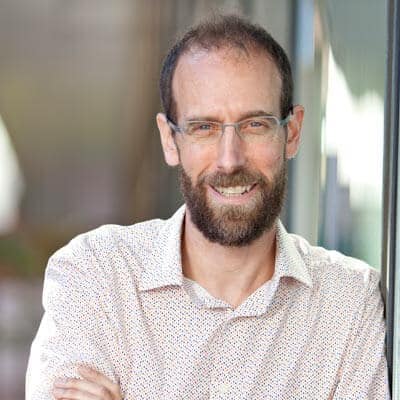Harvard scientists say aspects of solar geoengineering can—and should—be tested without need for full-scale deployment
A vast majority of scientists believe that the Earth is warming at an unprecedented rate and that human activity is almost certainly the dominant cause. But on the topics of response and mitigation, there is far less consensus.
One of the most controversial propositions for slowing the increase in temperatures here on Earth is to manipulate the atmosphere above. Specifically, some scientists believe it should be possible to offset the warming effect of greenhouses gases by reflecting more of the sun’s energy back into space.
The potential risks—and benefits—of solar radiation management (SRM) are substantial. So far, however, all of the serious testing has been confined to laboratory chambers and theoretical models. While those approaches are valuable, they do not capture the full range of interactions among chemicals, the impact of sunlight on these reactions, or multiscale variations in the atmosphere.
Now, a team of researchers from the Harvard School of Engineering and Applied Sciences (SEAS) has outlined how a small-scale “stratospheric perturbation experiment” could work. By proposing, in detail, a way to take the science of geoengineering to the skies, they hope to stimulate serious discussion of the practice by policymakers and scientists.
Ultimately, they say, informed decisions on climate policy will need to rely on the best information available from controlled and cautious field experiments.
The paper is among several published today in a special issue of the Philosophical Transactions of the Royal Society A that examine the nuances, the possible consequences, and the current state of scientific understanding of climate engineering. David Keith, whose work features prominently in the issue, is Gordon McKay Professor of Applied Physics at Harvard SEAS and a professor of public policy at Harvard Kennedy School. His coauthors on the topic of field experiments include James Anderson, Philip S. Weld Professor of Applied Chemistry at Harvard SEAS and in Harvard’s Department of Chemistry and Chemical Biology; and other colleagues at Harvard SEAS.
“The idea of conducting experiments to alter atmospheric processes is justifiably controversial, and our experiment, SCoPEx, is just a proposal,” Keith emphasizes. “It will continue to evolve until it is funded, and we will only move ahead if the funding is substantially public, with a formal approval process and independent risk assessment.”
With so much at stake, Keith believes transparency is essential. But the science of climate engineering is also widely misunderstood.
“People often claim that you cannot test geoengineering except by doing it at full scale,” says Keith. “This is nonsense. It is possible to do a small-scale test, with quite low risks, that measures key aspects of the risk of geoengineering—in this case the risk of ozone loss.”
Such controlled experiments, targeting key questions in atmospheric chemistry, Keith says, would reduce the number of “unknown unknowns” and help to inform science-based policy.
The experiment Keith and Anderson’s team is proposing would involve only a tiny amount of material—a few hundred grams of sulfuric acid, an amount Keith says is roughly equivalent to what a typical commercial aircraft releases in a few minutes while flying in the stratosphere. It would provide important insight into how much SRM would reduce radiative heating, the concentration of water vapor in the stratosphere, and the processes that determine water vapor transport—which affects the concentration of ozone.
In addition to the experiment proposed in that publication, another paper coauthored by Keith and collaborators at the California Institute of Technology (CalTech) collects and reviews a number of other experimental methods, to demonstrate the diversity of possible approaches.
“There is a wide range of experiments that could be done that would significantly reduce our uncertainty about the risks and effectiveness of solar geoengineering,” Keith says. “Many could be done with very small local risks.”
A third paper explores how solar geoengineering might actually be implemented, if an international consensus were reached, and suggests that a gradual implementation that aims to limit the rate of climate change would be a plausible strategy.
“Many people assume that solar geoengineering would be used to suddenly restore the Earth’s climate to preindustrial temperatures,” says Keith, “but it’s very unlikely that it would make any policy sense to try to do so.”
Keith also points to another paper in the Royal Society’s special issue—one by Andy Parker at the Belfer Center for Science and International Affairs at Harvard Kennedy School. Parker’s paper furthers the discussion of governance and good practices in geoengineering research in the absence of both national legislation and international agreement, a topic raised last year in Science by Keith and Edward Parson of UCLA. “The scientific aspects of geoengineering research must, by necessity, advance in tandem with a thorough discussion of the social science and policy,” Keith warns. “Of course, these risks must also be weighed against the risk of doing nothing.”
If our reporting has informed or inspired you, please consider making a donation. Every contribution, no matter the size, empowers us to continue delivering accurate, engaging, and trustworthy science and medical news. Independent journalism requires time, effort, and resources—your support ensures we can keep uncovering the stories that matter most to you.
Join us in making knowledge accessible and impactful. Thank you for standing with us!


Peter Huybers at Harvard has documented link between earth’s axis tilt and ice ages. He observed that global warming is why North America is not buried by ice. Obviously too much warming is bad. But lets not undo the good effects of green house gases. http://news.harvard.edu/gazette/story/2012/01/of-orbits-and-ice-ages/